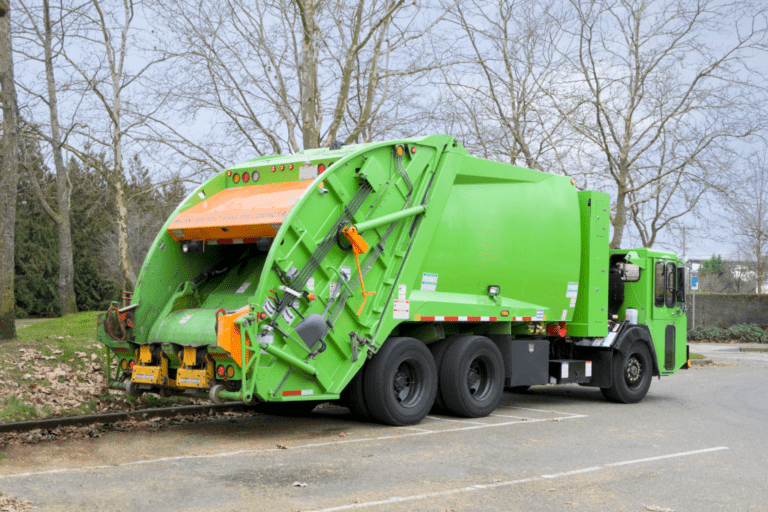As a fleet manager, you are responsible for an enormous amount of equipment and many employees. It’s important that you stay knowledgeable, not only about rules and regulations but about technology and vehicle advancements. Companies who prepare for, and embrace change are the ones who succeed the most when it comes.
Technology continues to make great leaps and strides forward. Two decades ago, Google was new. A decade ago, smartphones were just starting to make their debut. Since then, smart technology has significantly affected vehicles as well. From backup cameras to lane departure alerts, the way we drive has forever changed. However, the biggest advancement we’ve seen eliminates the need to drive altogether. We’re talking of course about the introduction of autonomous vehicles (AVs).
When you hear the phrase self-driving vehicle, your mind imagines a vehicle without someone to operate the gas, brake, and steering wheel. In reality, especially for fleet managers, it’s much more than that. You’re not only removing a driver, you’re removing the person who fuels the vehicle, does maintenance checks, and possibly cleans the vehicle as well. So what do AVs really mean for fleet managers?
AVs just like any other technological advancement come with their own set of pros and cons. Below, you’ll find a few challenges and benefits you can expect to experience as AVs become more common.
The Cons
Acquisition
Upgrades are crucial to a business’s success. They are the way forward, and eventually, it’ll be hard to operate without them. Just imagine trying to connect with people while still using a flip phone. Still, upgrades come with one huge challenge: the cost. New and improved always means a bigger price tag. Further, AVs will come with a pretty hefty one. AVs are equipped with a significant amount of computing ability and sensing technology, including LiDAR and powerful GPS systems. Take driverless trucks for example, the Tesla Semi starts around $150,000 and the fancier Founder Series, with the top specs, will cost $200,000. While that’s less than some predicted, it’s still a pretty costly initial investment to make.
Maintenance
Maintenance is a time consuming and costly process with regular vehicles, but it’s going to be much more complex with autonomous vehicles. In some situations, as is common with truck drivers, the driver of the vehicle owns or leases the vehicle from a parent company. This means they’re responsible for maintenance costs as they occur. Obviously, that won’t be the case with driverless vehicles. For companies who’ve been responsible for their truck’s maintenance costs, the transition to AVs won’t be quite as jarring. Indeed, maintenance on AVs will involve new, complex technology and delicate software. This will present new challenges (and higher costs) for businesses when repairs are needed.
Loss of Jobs
Truckers represent about 1% of the U.S. workforce, which means that 1.6 million truckers could potentially be out of a job. This not only affects them, but it greatly affects their families and could disrupt the economy. Some believe that this significant loss of jobs could trigger a chain reaction that will affect gas stations, highway diners, motels, and other businesses that cater to those on the road. Even if truck drivers are reassigned to other jobs, possibly involving the new AVs, it’s likely that their pay take a huge hit. This could cause a significant amount of stress for those who’ve been loyal to a company for several years.
The Pros
Fewer Accidents

Accidents are costly, both in human life and financial damages. This is especially true for fleet managers. If an accident involving one of your vehicles occurs, you could face a loss of productivity, penalties, liability payments, and repair costs. All of this adds up to create a tremendous expense. Unfortunately, accidents happen across the US every day. But, according to the National Highway Safety Administration over 90% of traffic accidents are caused by human error. Humans are emotional, easily distracted, and get tired on long journeys. AVs won’t suffer the same weaknesses. Because of this, AVs are expected to drastically reduce accidents, make the roads safer, and save you from expensive repairs and possible legal complications.
Good for the Environment
Reducing carbon emissions is a top priority for those fighting against climate change, and AVs could make a huge difference. AVs won’t waste fuel with bad route planning, speeding to get through yellow lights, slamming on their brakes because they were texting, or other bad driving behavior humans exhibit from time to time. AVs can also drive closer together and plan routes that will likely reduce the number of traffic jams, where fuel constantly pollutes the air.
Reduced Operating Costs
As we mentioned earlier, the cost of converting a fleet to autonomous is significant. However, this balances out over time, since the costs of operating an autonomous fleet will be lower than operating a regular one. To give you an example of an AVs cost-cutting benefits, fuel consumption is expected to decline by as much as 44% for passenger vehicles and 18% for trucks by 2050. And with far fewer accidents projected for AVs, you’re very likely to see your insurance premium drop or be eliminated altogether.
Capital Efficiency
As we mentioned above, there will be reduced operating costs, but AVs will also provide better capital efficiency since limitation on driver hours will no longer be a concern. Right now, fleet managers have to schedule drivers around strict limitations, and this can make it challenging to get trucks to their destination within a certain time frame. With AVs, you no longer have to schedule multiple drivers or schedule stops along a route so the driver can rest. AVs have no limits. They can successfully travel to multiple destinations in one trip without ever surpassing limitations that would endanger a human driver. This increases profit and makes your company more efficient overall.
Conclusion
There are significant pros and cons to AVs, but regardless of the challenges, change is coming. As a fleet manager, how you prepare for this change will significantly impact your company’s future. It’s important to learn all you can now and create a plan for how your company will adapt to this new technological age. The more you prepare, the easier it will be to face any challenges that arise. This will increase the benefits your company experiences from the many improvements AVs will make to your fleet.
Fleet management includes several areas of responsibilities. At Whip Around, we aim to make your day-to-day life a little easier. We simplify fleet inspections by allowing you to customize your forms, inspect via an app, and manage reports online. If you’d like to learn more about our app, and how you can better maintain control over the inspection process of your current fleet, please contact us today.









